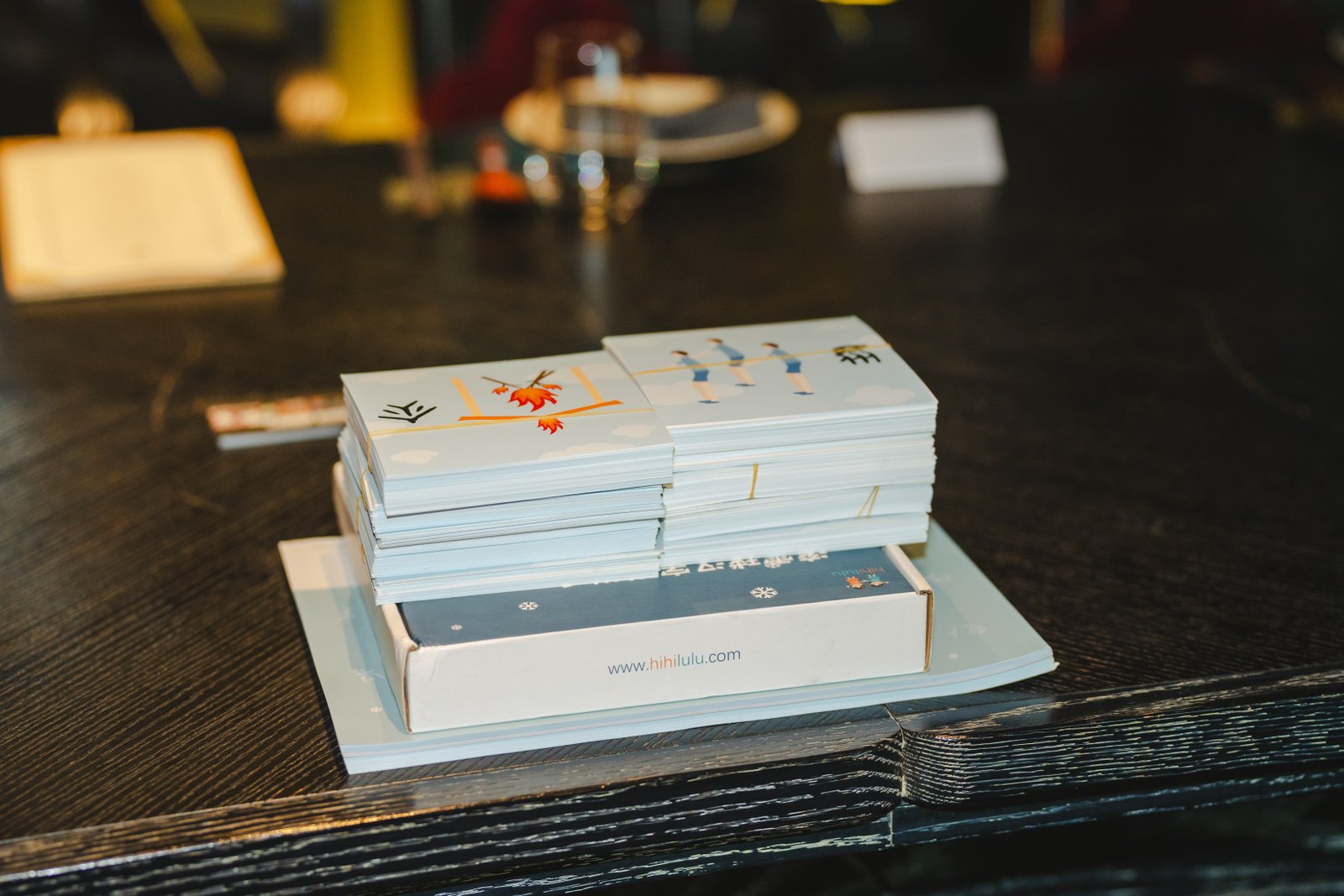
Jennifer Huang: Turning Chinese into Every Child’s Second Language
They say Chinese is the hardest
language in the world.
To most ears, it sounds like a warning, an intricate script of thousands of
characters, a tonal maze where one syllable can mean ten different things.
Parents often shy away, and teachers feel unprepared. The perception is so
widespread, it’s become a quiet consensus: Chinese is just too difficult. But
what if that belief isn’t rooted in the language itself, but in how it’s been
taught?
Jennifer Huang looked
at the so-called hardest language and thought—Children deserve better.
What began as a personal mission to help her twin daughters, Hila and Luna,
learn Chinese joyfully while growing up in France soon grew into something far
more impactful. With an engineer’s logic, a marketer’s insight, and a mother’s
instinct, she founded hihilulu—a platform built not to simplify the
language, but to unlock it.
A Pioneering Force in the EdTech
Space
With a background in engineering,
an MBA, and experience in international marketing, consulting, and as the CEO
of a London-based tech startup, Jennifer recognized the potential of leveraging
digital technology and pedagogical precision to address the gaps in Chinese
language education for non-native speakers.
Driven by this vision, she
quickly assembled a cross-continental team in France and China to build the
first beta version of a digital streaming platform. This led to the launch of
the mobile application Learn Chinese hihilulu, designed to immerse young
children in Chinese at home through engaging content and effective methodology.
Unexpectedly, the platform’s
first major client was a Montessori school in Paris. After years of struggling
with traditional Chinese teaching methods, the school turned to hihilulu as an
innovative solution. This milestone prompted Jennifer to reassess the broader
demand within the private education sector, eventually leading to the
development of hihilulu Atelier®—a web-based platform tailored
specifically for schools.
Making Chinese Child’s Play
Chinese is often seen as
difficult, but Jennifer, founder of hihilulu, believes the real issue lies in
outdated teaching methods. Unlike traditional approaches, hihilulu uses a
science-backed, dual-structured method that separates speaking from character
learning and taps into how children’s brains develop.
“Children under 12 use both brain
hemispheres for language,” Jennifer explains. “That’s our chance to fully
engage them—especially with a tonal, character-based language like Chinese.”
Studies also show that learning
Chinese boosts memory, problem-solving, and early literacy. For Jennifer,
hihilulu is more than language—it’s about unlocking cognitive and cultural
potential. “Our mission is to make Chinese not only learnable, but lovable.”

A Smarter Framework for Language
Learning
At the heart of hihilulu’s
pedagogy lies the Dualism Theory—a fundamental departure from the widely
used Monism approach in Chinese language education. Dualism treats oral
communication and character literacy as two distinct, equally important
learning streams.
Most traditional methods attempt
to teach speaking and reading Chinese simultaneously, often overwhelming young
learners. hihilulu’s method respects the linguistic complexity of Chinese and
approaches it more like how children learn their first language: speaking comes
first, writing follows.
"Words are based on sounds,
while characters are built on meaning," Jennifer says, echoing the
insights of renowned Sinologist Prof. Joël Bellassen, whose work heavily
influenced the hihilulu model.
By differentiating between these two systems, hihilulu enables children to first become confident in spoken Chinese, then gradually introduce the visual system of Chinese characters, making the journey more intuitive and less frustrating.
The Snowballing Method
Another signature element of
hihilulu’s approach is the Snowballing Method, which introduces children
to Chinese through a set of 125 core visual components—the building blocks from
which thousands of characters are constructed.
Chinese characters are not random
symbols; they are logical puzzles formed from semantic and phonetic components.
For instance, the component for “sun” (?) combined with “moon” (?) creates the
character for “bright” (?). Add “white” (?) to “bright,” and you get the verb “to understand” (??).
This layered structure is the
foundation of the Snowballing Method. By focusing on high-frequency,
high-recurrence components, hihilulu helps children quickly grasp the rules of
character formation, enabling them to decode unfamiliar characters as they
progress.
The benefits of this method are
substantial:
According to Jennifer, “It’s like
giving kids a map before they enter the maze. Once they understand how the
components connect, they no longer feel lost in a sea of symbols—they start to
recognize patterns and build vocabulary naturally.”
Designing for Young Minds
For Jennifer, ensuring that
hihilulu stays both pedagogically rigorous and irresistibly engaging is a
delicate balance, but one she and her team have mastered with care. While
originally focused on ages 3 to 12—the golden window for language
learning—hihilulu has expanded to include learners up to 14 in response to
school demand. The curriculum now offers two levels for ages 3–6, five for
6–11, and one for 12+, with two more in development.
Rooted in learning science,
hihilulu uses immersive exposure, scaffolded progression, and its proprietary
Snowballing Method, which introduces Chinese characters in a cumulative,
brain-friendly sequence. But rigor alone isn’t enough—so hihilulu blends
education with fun through gamification, storytelling, and interactive visuals
that spark curiosity and sustain attention.
Personalized feedback, adaptive
homework, and real-time progress tracking support each child’s pace. Jennifer
also works closely with educators and child development experts to keep the
platform aligned with evolving best practices. “We listen, we test, we refine,”
she says. “Our goal is to be as developmentally aligned as we are
technologically advanced.”
Reinventing
Mandarin Education for Young Learners
While
many schools struggle to teach Mandarin with conventional methods,
hihiluluAtelier@School offers a purpose-built solution for non-native learners
aged 3 to 14. Its standout Snowballing Method accelerates literacy through
structured character acquisition, while age-appropriate content and cultural
storytelling make learning engaging from day one. The hybrid model combines
digital tools with hands-on materials for a multi-sensory experience, and its
plug-and-play design fits seamlessly into any schedule. With step-by-step
lesson plans and multilingual guides, even teachers with no Mandarin background
can lead classes confidently. As Jennifer puts it, “We’re not just delivering
content—we’re building a sustainable ecosystem for Chinese education.”
Language Learning for the Whole
Family
For
families introducing Mandarin at home, Learn Chinese@Home—via the
hihilulu app—offers a flexible, child-friendly solution for ages 3 to 8.
Through theme-based micro-learning, kids build vocabulary naturally with
animated stories, games, and cultural content. The app’s parent-friendly
interface provides multilingual guides and dashboards, enabling even
non-Chinese-speaking parents to support learning. Short, engaging lessons
promote daily practice, while reward-based progress keeps motivation high.
Accessible across devices, it turns everyday moments into opportunities for
shared cultural discovery. As Jennifer says, it’s not just language—it’s a
family journey.
Learning
in Every Language
Recognizing
that children learn differently, Jennifer designed hihilulu to support visual,
auditory, and kinesthetic learners. At home, the Learn Chinese hihilulu app
uses animated stories and games to build listening and speaking skills. In
classrooms, Atelier@School combines digital lessons with hands-on kits and
progress tracking, ideal for active, tactile learners. A key highlight is
hihilulu’s AI voice tool, offering real-time pronunciation feedback—helping
kids master Mandarin’s tonal precision anytime, anywhere.
Unlocking
the Joy of Chinese Learning Worldwide
hihilulu’s unique approach to
Chinese language education has gained traction across multiple continents,
earning enthusiastic feedback from both educators and families.
One school director noted in a testimonial
that hihilulu was the only solution that successfully replaced failed
traditional approaches to Mandarin instruction. Many schools commend not only
the innovative methodology but also the comprehensive support
offered—particularly teacher training and academic quality supervision, which
remove the usual barriers to launching a Chinese program.
From parents, the response is
equally encouraging. They often share how their children are learning Chinese
with ease and joy, and how hihilulu’s methods have effectively resolved one of
the toughest challenges—literacy acquisition, particularly in reading and
writing Chinese characters.
Approach
to Cultural Resonance
As hihilulu expands its footprint
around the world, Jennifer emphasizes a local-first approach while keeping the
core Chinese pedagogy intact.
Localization begins with teacher
empowerment—each local educator is trained and certified through HIHILULU
Academy, ensuring they not only understand the platform but can confidently
deliver it in a way that resonates with their students’ context.
Respecting cultural norms is
central to the company’s ethos. For example, in Arab countries, all content
featuring pigs was removed to align with religious sensitivities. Across all
markets, hihilulu carefully tailors content to reflect universal values and
child-friendly storytelling, while introducing Chinese culture through language
in a respectful, accessible way.
“We believe in cultural dialogue,
not cultural dominance,” says Jennifer. “Our mission is to teach Mandarin while
honoring the values of every community we serve.”
Vision for Next-Gen Language
Education
hihilulu’s platform harnesses the
power of personalization and AI-driven learning paths to provide an optimized
and intuitive learning experience for children. By tracking each learner’s
progress, the platform intelligently selects content that aligns with their
current level and needs, ensuring a personalized learning journey.
The system also features
AI-enhanced speech training, allowing learners to practice their pronunciation
with real-time feedback. Interactive games and a smart test data bank further
support skill development by offering dynamic reinforcement and assessment.
Currently, hihilulu is working on
training its proprietary Snowballing Language Model as a foundation for an AGI
application. This advancement aims to revolutionize the platform—enabling
features like self-generated courseware for teachers, enhanced real-context
language learning through animation, and much more. While details remain under wraps,
the ambition is clear: to redefine digital language learning with
next-generation technology.
Immersion Through Motion and
Emotion
Animation is central to
hihilulu’s teaching approach, making Mandarin engaging and effective for ages
3–14:
hihilulu measures impact through
engagement, retention, and recall via built-in analytics.
Overcoming
Hurdles in Chinese Language Learning
Building a Chinese language
platform for children came with distinct challenges—each met with creative
solutions:
Shaping the Future of Language
and Culture
Jennifer sees AI and robotics as
the most exciting frontiers in EdTech. While still in their early stages, these
technologies promise to transform how languages are learnedby making learning
environments more intelligent, personalized, and interactive than ever before.
hihilulu is actively laying the
groundwork to integrate these trends, particularly through its Snowballing
Language Model, aiming to position itself at the forefront of the next
generation of education technology.